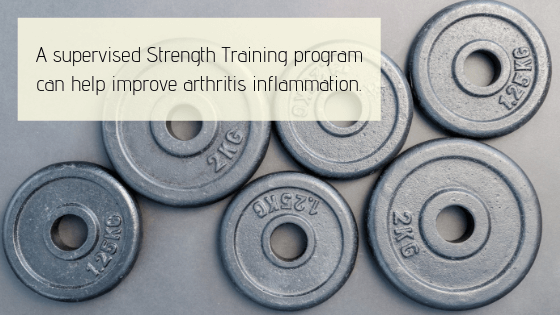“Is exercise safe for my knees?”
I get this question regularly from physical therapy patients and strength training clients alike. And it makes perfect sense, given what most people (and even clinicians) understand about arthritis. In this article, I’m going to explain why this common misunderstanding is incorrect, and leads to fearful avoidance of healthy activity.
Osteoarthritis (osteo – bone, arth – joint, itis – irritation/inflammation) is primarily characterized by thinning of the cartilage within a joint. Cartilage is amazing – it’s actually slicker than wet ice! It does an amazing job of eliminating friction when two bones have to move against each other under high forces. When that cartilage breaks down, those bones experience significant stress which can cause them to thicken and change shape to protect themselves.
Osteoarthritis (OA) is often contrasted with other joint disorders like Rheumatoid Arthritis (RA) or its pediatric cousin, Juvenile Idiopathic Arthritis (JIA). In these conditions, an active inflammatory and immune process targets and degenerates the cartilage and lubricating synovial fluid. This contrast has led to a bit of a false dichotomy, even in the minds of many physical therapists, physicians, and other health care professionals. We have one category of arthritis that is “inflammatory” (RA and JIA) and another that isn’t (OA). While RA and JIA are driven by systemic disorders, OA is regarded as simply an issue of wear and tear.
Or is it?
It comes as no surprise that arthritis is related to obesity. Added weight, after all, must drive more wear and tear, right? But a startling fact emerges: obese people have more arthritis in their fingers as well. Unless we assume they are walking on their hands, we have to conclude that something else related to obesity must contribute to OA, besides weight. That “something” is a host of inflammatory signaling molecules that are released by body fat, such as Interleukin-6, and Tumor Necrosis Factor alpha. These compounds should only arise in response to an acute stress, like an injury or a training stimulus, and they lead to a healthy healing response. But if they are chronically elevated, as is the case in obesity, the signal to begin healing gets lost in the noise of systemically elevated inflammatory chemicals.
This is the key insight: OA is NOT exclusively a disease of wear and tear; it’s a disease of insufficient healing. We now know that systemic inflammation plays a driving role in osteoarthritis. We also understand that managing the inflammation, and not avoiding load, should be our primary focus when trying to slow its progression and alleviate symptoms.

Proper sleep, nutrition, and strength training are the bedrock of low-inflammation living. Resistance training may not be the most important of these three, but it definitely takes the least will-power to get right. Stimulate the muscles of your hips and thighs maximally, using techniques and equipment that allow you to avoid unnecessary joint stress. Do this every week, and your body will benefit from the powerful anti-inflammatory effects of deeply fatiguing your muscles. Stay consistent, and the strength increases you will experience will drastically improve your functional capacity, and your muscular quality – an essential element in preventing/managing joint pain.

